
America was born out of conflict, and much of the history of the United States has been punctuated by war. The United States has fought wars for independence, the preservation of its union, maritime trade rights, territorial expansion, and in opposition to tyranny, communism, and fascism. (These were the biggest battles of World War II.)
When wars are fought, of course, people die – sometimes many thousands. To determine the deadliest wars for Americans, 24/7 Wall St. reviewed data from the Department of Veterans Affairs and the Department of Defense to determine the conflicts in U.S. military history with the most Americans killed in action. (Some totals are estimates, not exact figures, and are noted as such.)
Seven of the 13 wars on our list were fought in the 20th and 21st centuries. At the start of the 20th century, and fresh off its victory over Spain in the Spanish-American War, the United States began to project power around the world. In an expression of emerging American might, President Theodore Roosevelt sent the so-called “The “Great White Fleet” – 16 new battleships – around the world, from December 1907 to February 1909.
After each conflict, the United States grew ever larger as a world power, and accompanying that expansion was a perception of additional responsibilities and obligations to be borne. That has led to long and costly land wars in Asia (including the Middle East) in recent decades, despite warnings by military and political leaders against fighting land wars on that continent. (These are 20 of the longest wars in history.)
Click here to see the deadliest wars for Americans
With renewed concerns about a possible Russian invasion of Ukraine and China’s saber-rattling over its claim on Taiwan, the U.S. might be embroiled in deadly wars again.
13. Operations Desert Shield & Desert Storm
> Battle deaths: 148
> Non-mortal wounds: 467
> Total service members: 2,225,000
> Duration: 1990-1991
After Saddam Hussein’s Iraqi forces invaded Kuwait to seize its oil-producing capacity, President George H.W. Bush assembled an alliance of 35 Western and Arab nations to expel Iraq from the small nation on the Arabian Peninsula. The war was conducted in two phases. The first, called Operation Desert Shield, involved a troop buildup in, and defense of, neighboring Saudi Arabia. That began in August 1990 and concluded in January 1991. At that point, the coalition launched the second phase, code-named Operation Desert Storm, beginning with a five-week aerial and naval bombardment that commenced on Jan. 17, followed by a ground assault that began on Feb. 24. The conflict ended 100 hours later with the expulsion of all Iraqi forces from Kuwait.
[in-text-ad]

12. Spanish-American war
> Battle deaths: 385
> Non-mortal wounds: 1,662
> Total service members: 306,760
> Duration: 1898-1902
The Spanish-American War was a one-sided conflict that resulted in ending Spain’s colonial empire in the Western Hemisphere and the emergence of the United States as a world power. The Spanish Empire had been in a long decline by the end of the 19th century and was trying to hold the few possessions it had. Among these was Cuba, where revolutionaries were fighting their Spanish overlords. The U.S., historically opposed to colonial influence in the New World, was sympathetic to their plight.
Tensions rose between the U.S. and Spain, culminating in the destruction of the American battleship the USS Maine in Havana Harbor in February of 1898. The U.S. claimed Spain was responsible and declared war. There followed a series of triumphs over overmatched Spanish forces in the Pacific and Atlantic, and Spain surrendered in August of 1898. Spain gave up all claims to Cuba, which came under U.S. supervision, and Puerto Rico. Virtually overnight, as well, the U.S. became a Pacific power by gaining sovereignty over Guam and the Philippines.
11. Indian War
> Battle deaths: 1,000
> Non-mortal wounds: n/a
> Total service members: 106,000
> Duration: 1817-1898
The Indian War was a series of conflicts between Native Americans and whites over land. In an act of ethnic cleansing in 1830, the U.S. government passed the Indian Removal Act, relocating Native Americans to territories west of the Mississippi River. Spanning a 20-year period, members of the so-called Five Civilized Tribes were forcibly sent westword in what became known as the Trail of Tears. In 1838 alone, about 15,000 Cherokee were sent more than 1,200 miles west, with more than 3,000 dying en route.
Tribes such as the Sioux of the Northern Plains and the Apache of the Southwest were strong opponents of encroachment on their tribal lands. Native American victories, such as the Battle of Little Bighorn, were few, but there was fierce opposition in the Montana territory, led by Lakota Chief Red Cloud. The last major conflict between Native Americans and the U.S. military occurred in 1890 at Wounded Knee in South Dakota, where 150 Native Americans and an estimated 25 American soldiers died.
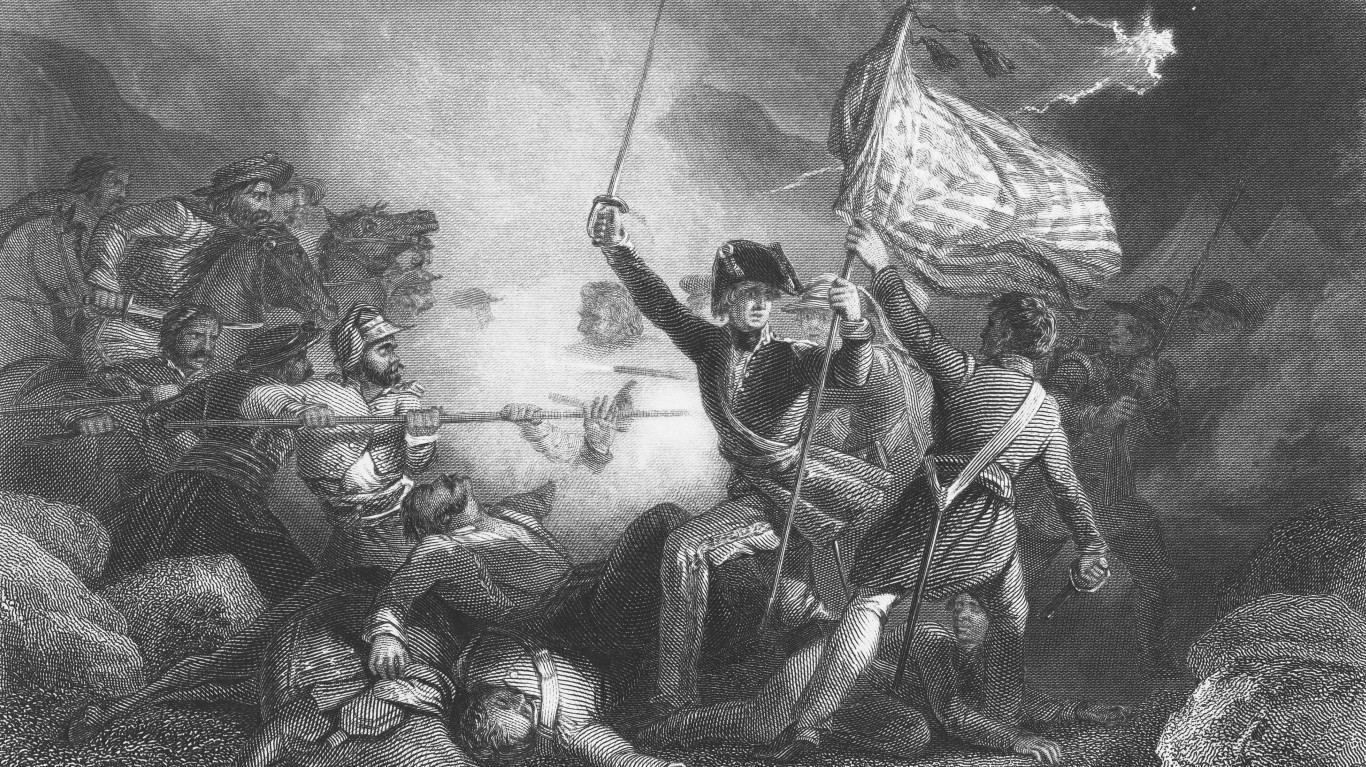
10. Mexican War
> Battle deaths: 1,733
> Non-mortal wounds: 4,152
> Total service members: 78,718
> Duration: 1846-1848
By the mid-19th century, the United States was growing rapidly, fueled by the belief that America was destined to claim all the land between the Pacific and Atlantic oceans. This expansion led to an unresolved border dispute in Texas between America and Mexico that resulted in war in 1846. The U.S. Army won almost all the battles and Mexico signed the Treaty of Guadalupe Hidalgo in 1848, ceding more than half of its territory to the United States. The U.S. gained the territories of Texas, California, Nevada, and Utah, as well as parts of New Mexico, Wyoming, Arizona, and Colorado.
The war produced many military leaders who would distinguish themselves in the Civil War just over a decade later, among them Ulysses S. Grant, Robert E. Lee, William Tecumseh Sherman, Stonewall Jackson, James Longstreet, and George McClellan.
[in-text-ad-2]

9. War in Afghanistan
> Battle deaths: 1,946
> Non-mortal wounds: 21,031
> Total service members: 1,400,000 (estimated)
> Duration: 2001-2021
In August 2021, President Joe Biden pulled out the last U.S. troops from Afghanistan, marking the end of the war in that Asian country after almost 20 years. The U.S. and its Allies invaded the mountainous nation in November 2001, after the Taliban government refused to hand over Osama bin Laden, the mastermind of al-Qaeda’s attacks on the United States on Sept. 11 of that year. The Taliban was routed and relocated to southern Afghanistan and over the border to Pakistan where it led an insurgency against the Western-backed government. The U.S.-led coalition formally ended its combat mission in 2014, and Afghan forces took the lead on securing the nation’s security. They were not up to the task because of corruption and poor leadership. The Taliban insurgency eventually defeated the Afghan military and the Taliban rules in the country today.

8. War of 1812
> Battle deaths: 2,260
> Non-mortal wounds: 4,505
> Total service members: 286,730
> Duration: 1812-1815
The American Revolution had been over for less than 30 years when the United States and Great Britain fought again. The war was an outgrowth of the conflict between the latter and Napoleon’s France. Both countries had placed trade restrictions on neutral nations, including the U.S., but Americans were further incensed by the practice of impressment, in which the British forcibly removed American seamen off their ships and into the service of Great Britain.
The war did not go well for the United States, which lost most of the battles. America was repulsed in its invasion of Canada, and suffered the indignity of the British burning the newly created capital of Washington, D.C., in 1814. The U.S. military fared better in the west with Commodore Oliver Hazard Perry’s victory at Lake Erie in September 1814, and after the British failed to take Baltimore, Great Britain sought an armistice. Later that year, a peace treaty was signed in Ghent, in what is now Belgium. None of the U.S. goals during the war were achieved, but the nation remained independent. Britain vowed to not change the border with Canada and an attempt to create a Native American state in the Northwest was abandoned.
[in-text-ad]
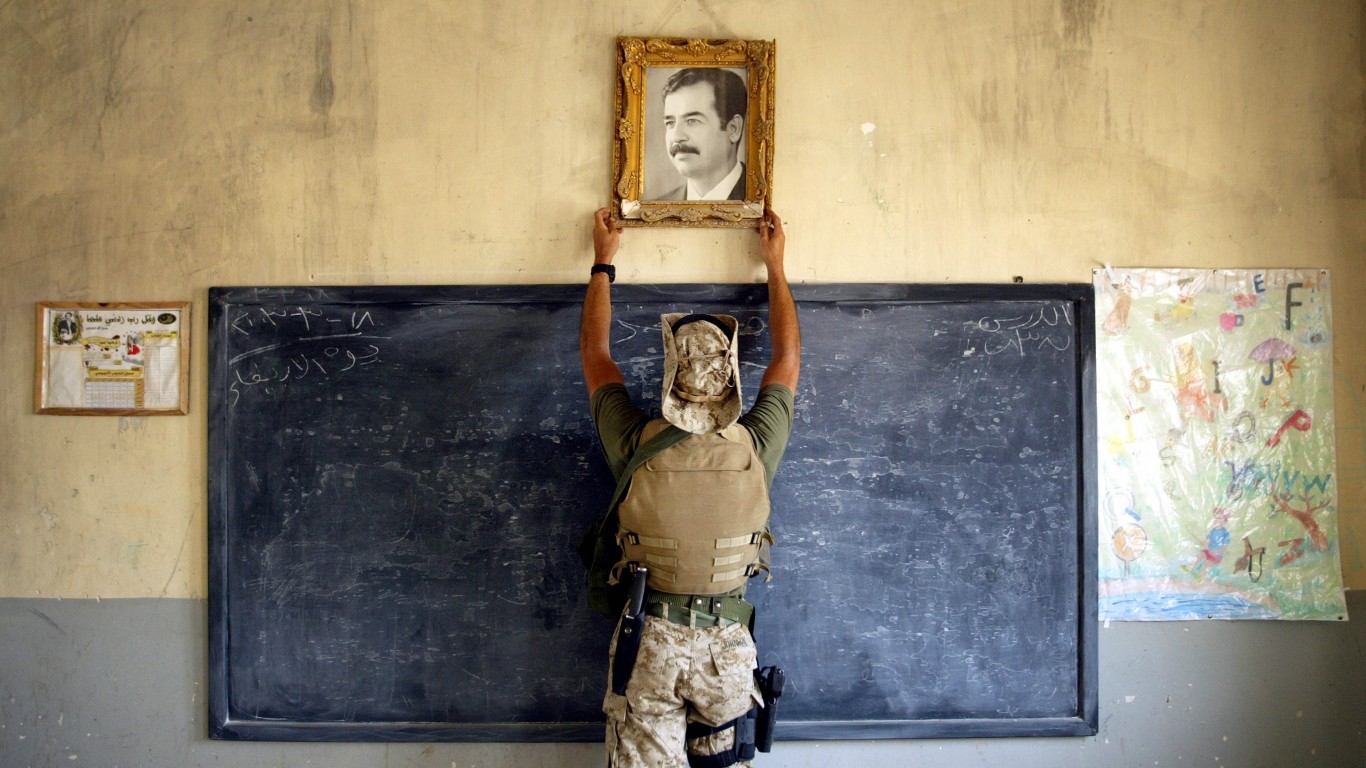
7. Iraq War
> Battle deaths: 3,528
> Non-mortal wounds: 32,292
> Total service members: 1,400,000 (estimated)
> Duration: 2003-2011
The Iraq War was fought from 2003 to 2011 and was conducted in two phases.
In the first phase, a United States-led coalition invaded Iraq in March 2003, claiming Saddam Hussein had refused to turn over weapons of mass destruction, and ousted the Iraqi government. That phase ended in April, but was quickly followed by an insurgency that endangered the newly formed government. Coalition casualties had been light in the first phase of the war, with just 150 deaths by May 1. But U.S. battle deaths climbed as the insurgency grew, topping 1,000 by the time of the U.S. presidential election in November 2004 and 3,000 by early 2007. A so-called surge of 20,000 U.S. soldiers sent to Iraq later that year led to a decline in the hostilities. The United States pared its military presence in Iraq, and formally withdrew in December 2011.
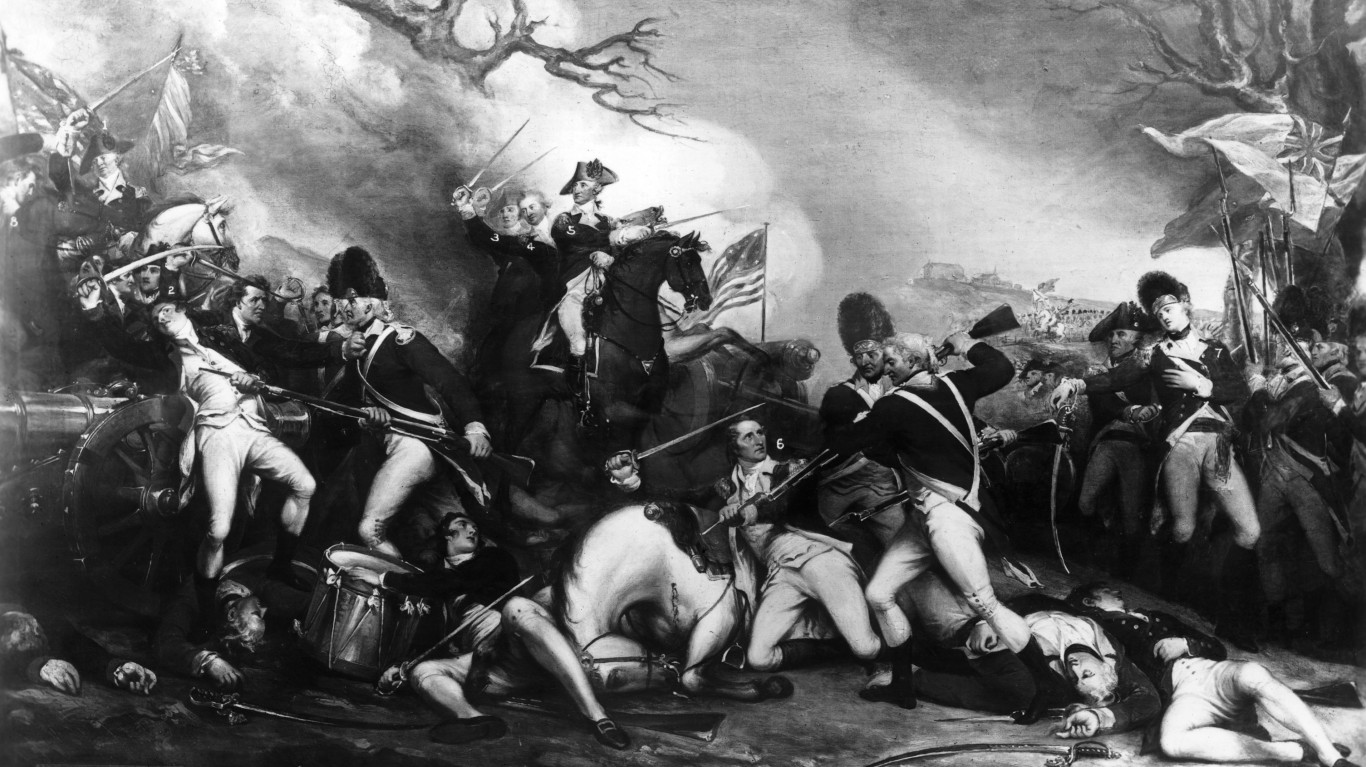
6. American Revolution
> Battle deaths: 4,435
> Non-mortal wounds: 6,188
> Total service members: 217,000 (estimated)
> Duration: 1775-1783
By percentage, the American battle deaths following the War of Independence were among the highest of any war the United States has fought. The total of 4,435 battle deaths were suffered by the new nation of fewer than four million people according to its first census, in 1790. For much of the war, the ragtag army and state militias were defeated in battles in the New England and mid-Atlantic region by professional soldiers from Great Britain and mercenaries from the German states. But aided by accomplished European soldiers such as Polish-Lithuanain military engineer Tadeusz Kościuszko and Casimir Pulaski, a Polish nobleman who trained the cavalry, the Americans and their allies Spain and France turned the tide and defeated the British, ultimately gaining independence.

5. Korean War
> Battle deaths: 33,739
> Non-mortal wounds: 103,284
> Total service members: 5,720,000
> Duration: 1950-1953
After World War II, the Korean Peninsula was divided between North Korea, supported by the communist-led nations of China and the Soviet Union, and South Korea, backed by the United Nations, the United States, and its allies. The border ran along the 38th parallel and border disputes led to an invasion of the south by North Korea, prompting the start of what is sometimes called the “Forgotten War.” It was the first shooting conflict during the broader ideological struggle between the communist nations and non-communist countries during the Cold War. Under Gen. Douglas MacArthur, the U.S.-led UN troops drove the communist forces to the Yalu River, the Chinese border. At that point, China entered the conflict and threw the UN troops back. The troops from the south fought their way back up the peninsula and the war settled into a stalemate, where it remains today, with the end of the war never having been officially declared.
[in-text-ad-2]
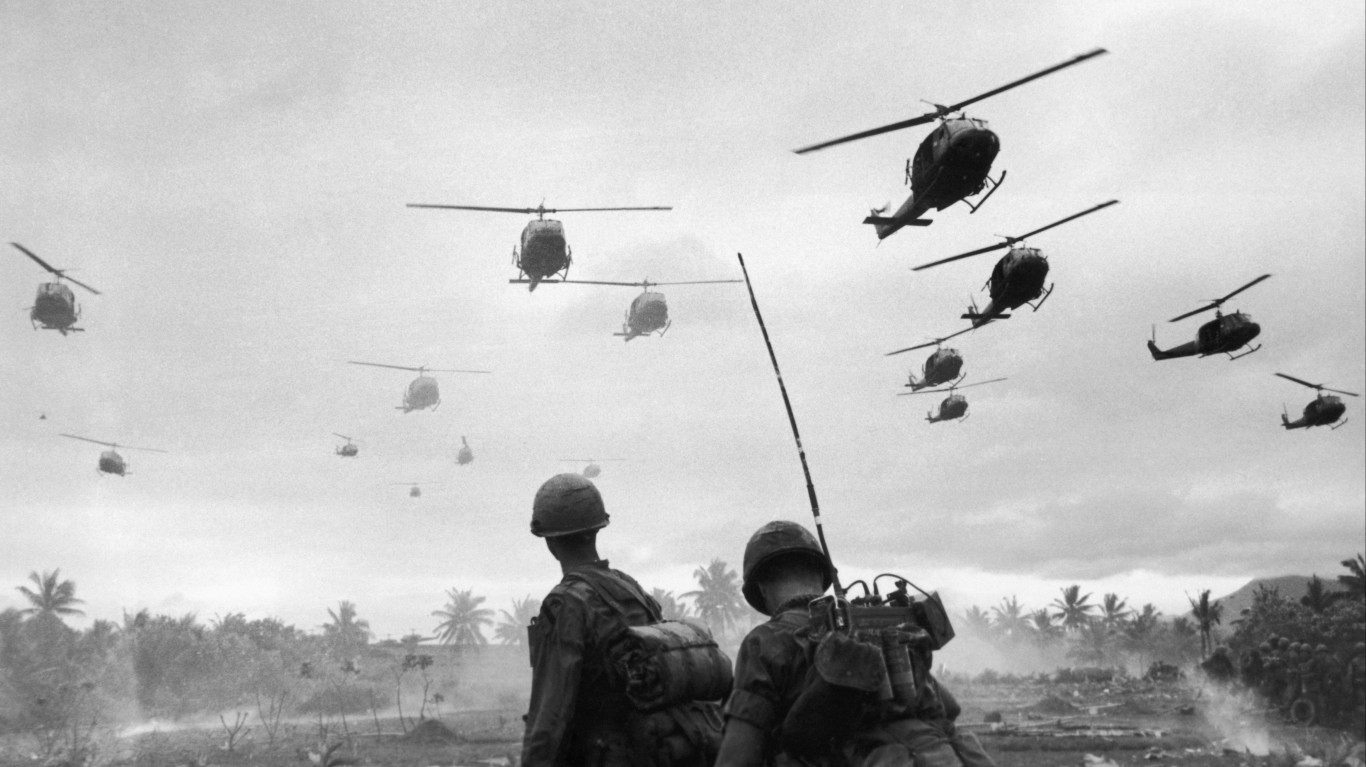
4. Vietnam War
> Battle deaths: 47,434
> Non-mortal wounds: 153,303
> Total service members: 8,744,000
> Duration: 1964-1975
The Vietnam War would become the most divisive conflict in American history.
The roots of the war are in World War II and the French colonial experience in Southeast Asia. Political leader Ho Chi Minh led opposition in the northern part of the country against the occupying forces of Japan and France. After both of those powers were defeated in the country, Vietnam was divided into north and south, with the north backed by the Soviet Union and its allies and the south supported by the U.S.
Though the start of the war is pegged at 1964 – with the escalation of U.S. forces following the Gulf of Tonkin incident involving an attack on a U.S. military vessel – American involvement in the region had been going on for at least a decade earlier.
The war was fought based on the so-called domino theory, holding that if a nation fell to communism it would lead to the downfall of its neighbor. The Vietnam war was a protracted and costly struggle, intensified by growing Cold War tensions between the United States and the Soviet Union. More than three million people were killed, more than half of them being Vietnamese civilians.
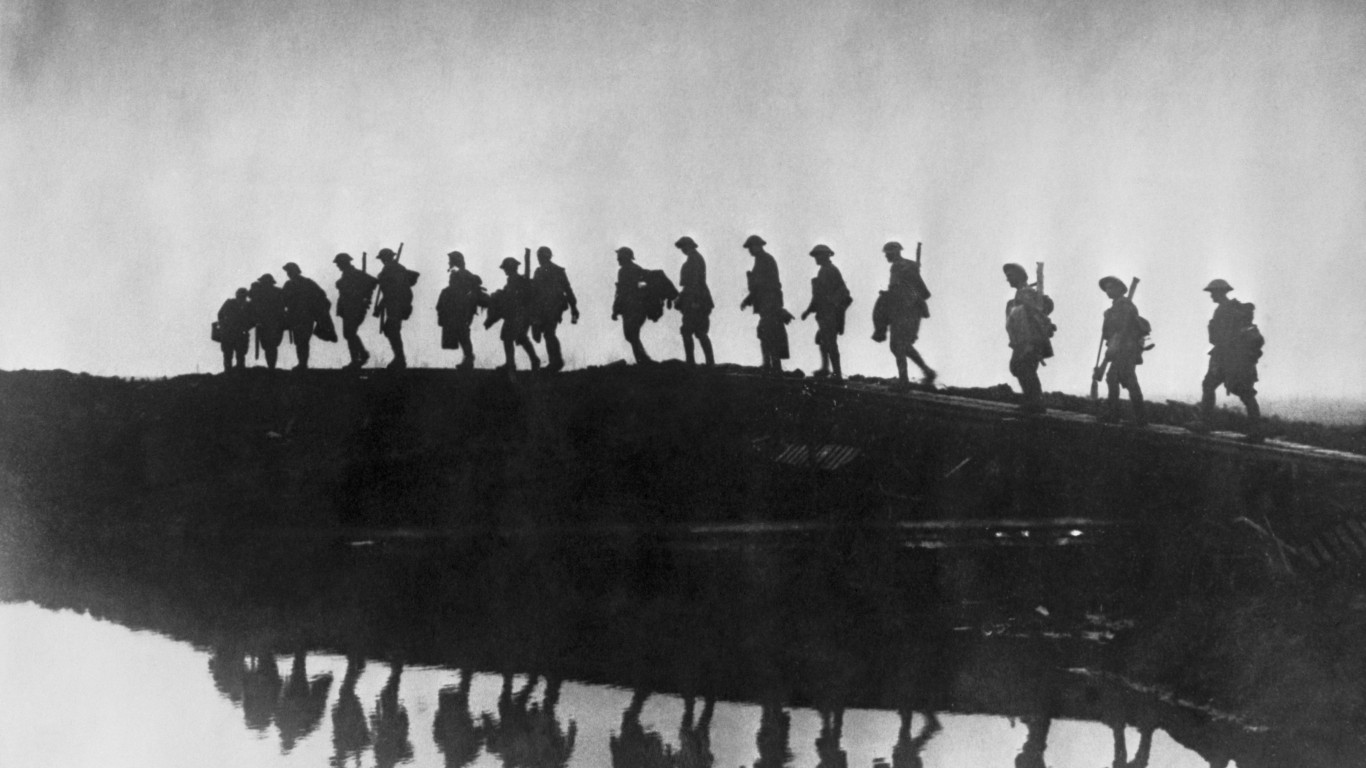
3. World War I
> Battle deaths: 53,402
> Non-mortal wounds: 204,002
> Total service members: 4,734,991
> Duration: 1917-1918
By the time World War I started in 1914, the United States had become the largest economy in the world. Much of its economic clout had been built on trade with economically vibrant countries in Europe, and that became imperiled once the war began. President Woodrow Wilson, seeking re-election in 1916, campaigned on keeping America out of war. But German use of unrestricted submarine warfare that sank American shipping bound for Great Britain and France pushed the U.S. into the conflict. When the U.S. declared war on the German Empire in April 1917 – a further declaration of war, on the Austro-Hungarian Empire, allies of the Germans, followed that December – there were 200,000 soldiers in the U.S. Army, the lowest number since the Civil War. But the economy quickly got on a war footing. Eventually, four million served in the military during the war, half of them overseas. Secretary of War Newton D. Baker said more than 25% of the entire male population of the country between the ages of 18 and 31 were in military service.
[in-text-ad]
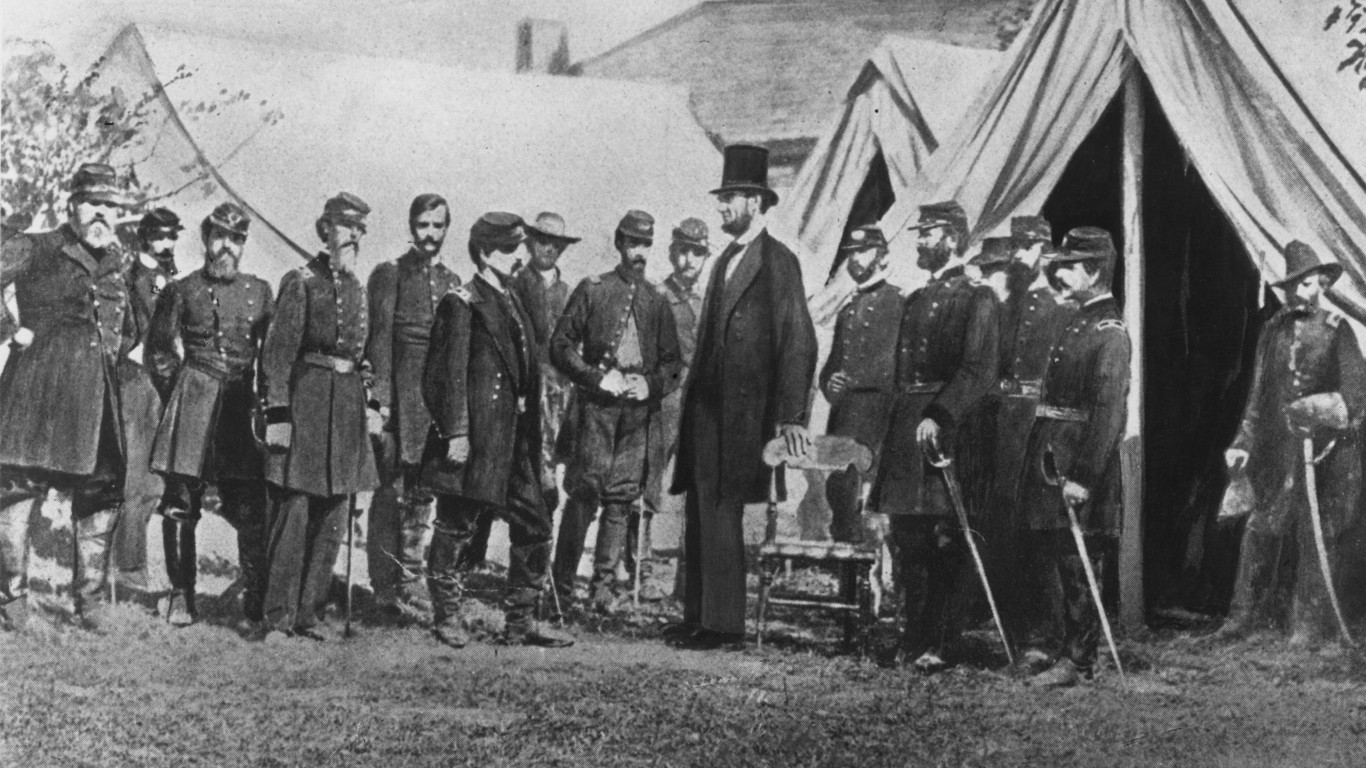
2. Civil War
> Battle deaths: 140,414 (Confederate: 74,524)
> Non-mortal wounds: 281,881 (Confederate: 59,597)
> Total service members: 2,213,363 (Confederate: est. 1,050,000)
> Duration: 1861-1865
In terms of percentage of the population, the Civil War was even costlier in lives than the American Revolution. The conflict was a prelude to the horrors of the 20th century, with destruction and death on a scale unparalleled until that time. Railroads were first used to quickly deploy troops to battle zones. Modern economies used newly developed methods of industrial production to make guns, bullets, and cannon on a massive scale. Grim tactics such as trench warfare at the battle of Petersburg in Virginia prefigured the ghastly grind of the Western Front during World War I.
The United States was able to keep the Southern states in the Union, and in the course of events, slavery was abolished. But bitter resentment in the South would linger for decades – some would say lingers until today – and the promise of freedom and equality for Blacks would go largely unfulfilled.
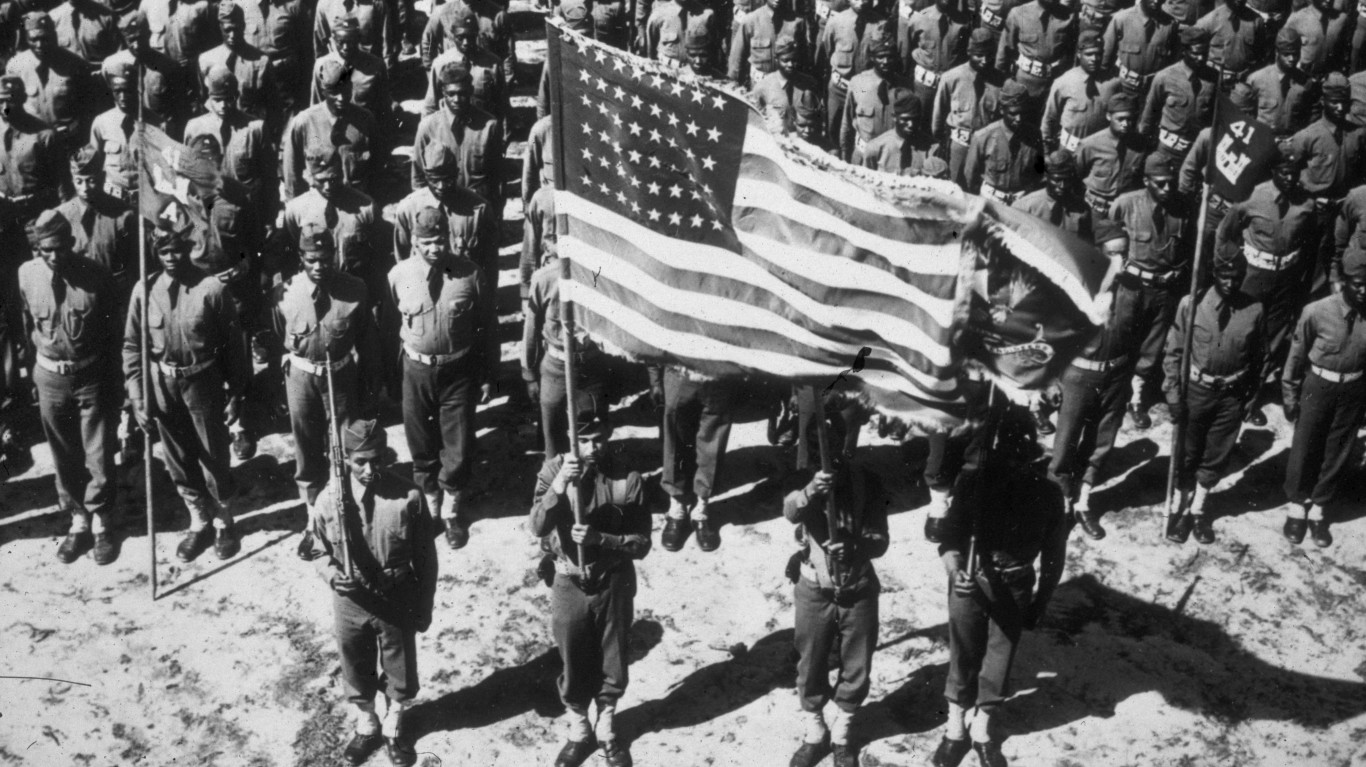
1. World War II
> Battle deaths: 291,557
> Non-mortal wounds: 670,846
> Total service members: 16,112,566
> Duration: 1941-1945
World War II was the greatest of all of history’s conflicts and more Americans died during the war than in any other. Isolationism was a powerful sentiment in the United States, even as Japan was running roughshod over China in the 1930s and German leader Adolf Hitler was demanding territory from its neighbors. But America’s close ties with Great Britain put the United States on a course of conflict with Germany, which had been sinking U.S. cargo ships bound for England. The U.S. was also on a war track with Japan after America imposed an oil embargo on that country over its conquests in the Pacific, and of course the Japanese sneak attack on Pearl Harbor made it imperative for the U.S. to confront that nation militarily. In 1940, the United States had fewer than 459,000 people in military service. By the time the Arsenal of Democracy had kicked into full gear in 1945, there were more than 12 million Americans in uniform.
“The Next NVIDIA” Could Change Your Life
If you missed out on NVIDIA’s historic run, your chance to see life-changing profits from AI isn’t over.
The 24/7 Wall Street Analyst who first called NVIDIA’s AI-fueled rise in 2009 just published a brand-new research report named “The Next NVIDIA.”
Click here to download your FREE copy.
Thank you for reading! Have some feedback for us?
Contact the 24/7 Wall St. editorial team.
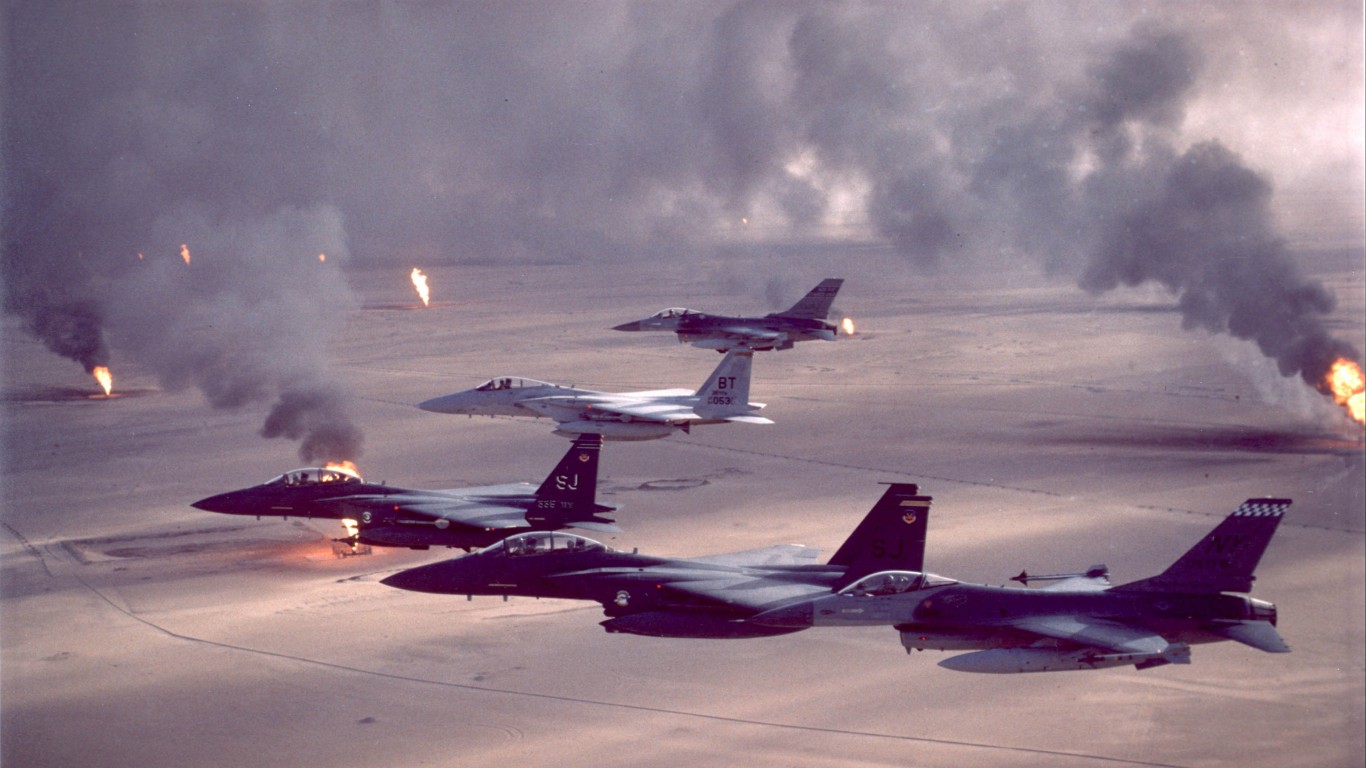
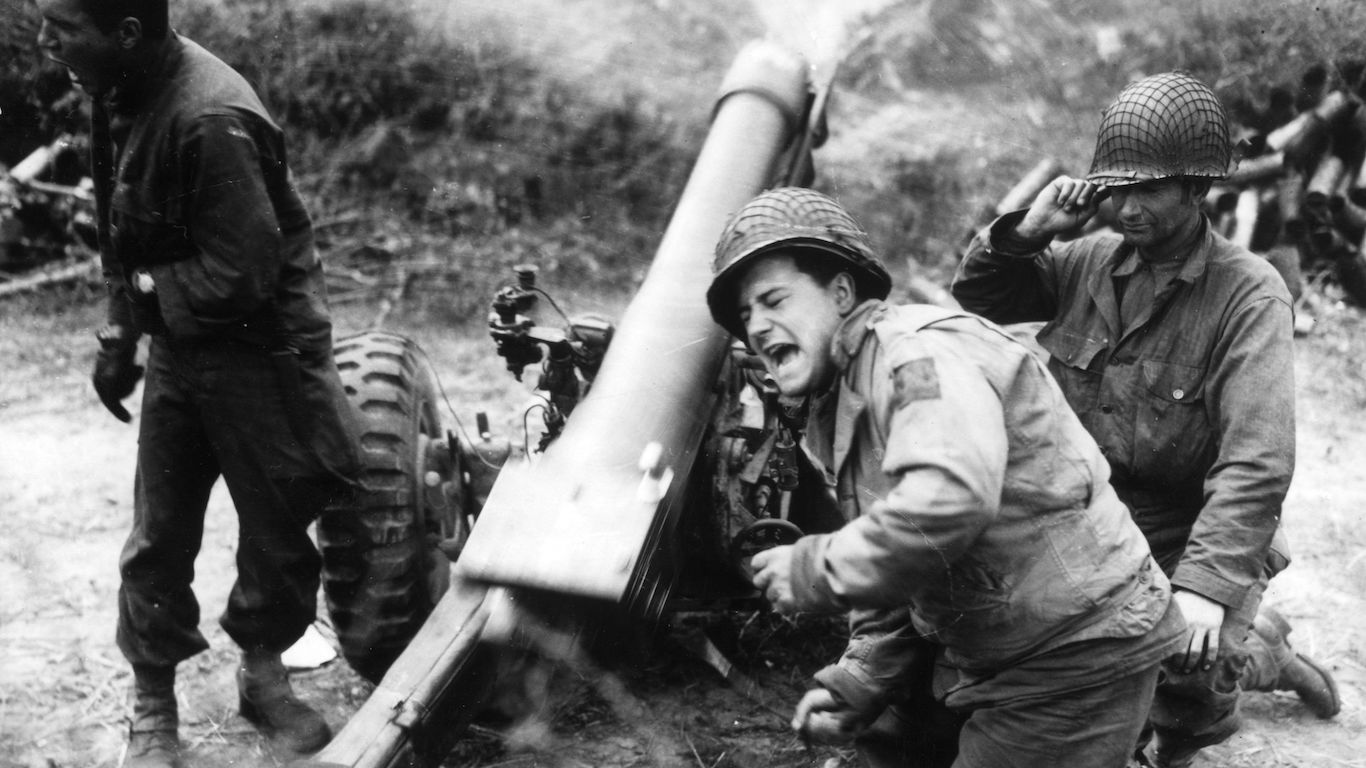 24/7 Wall St.
24/7 Wall St.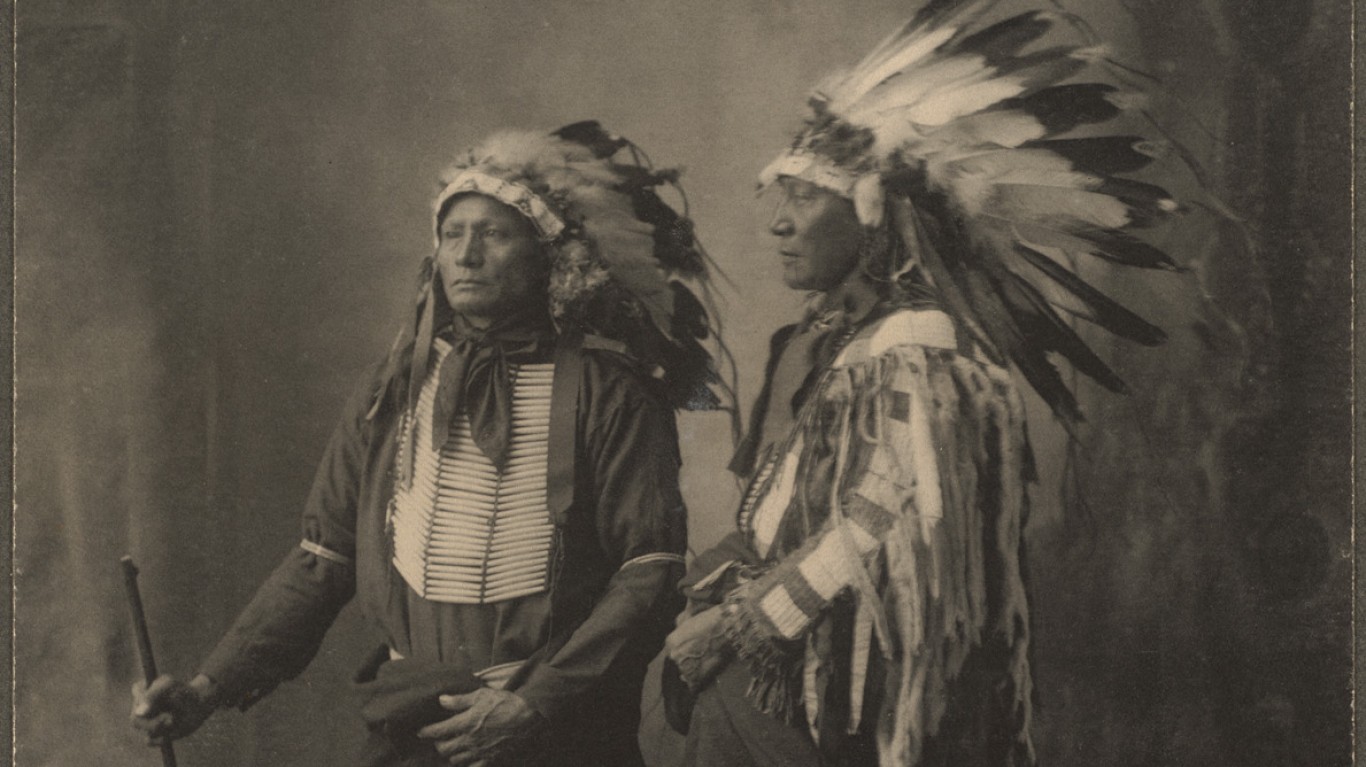
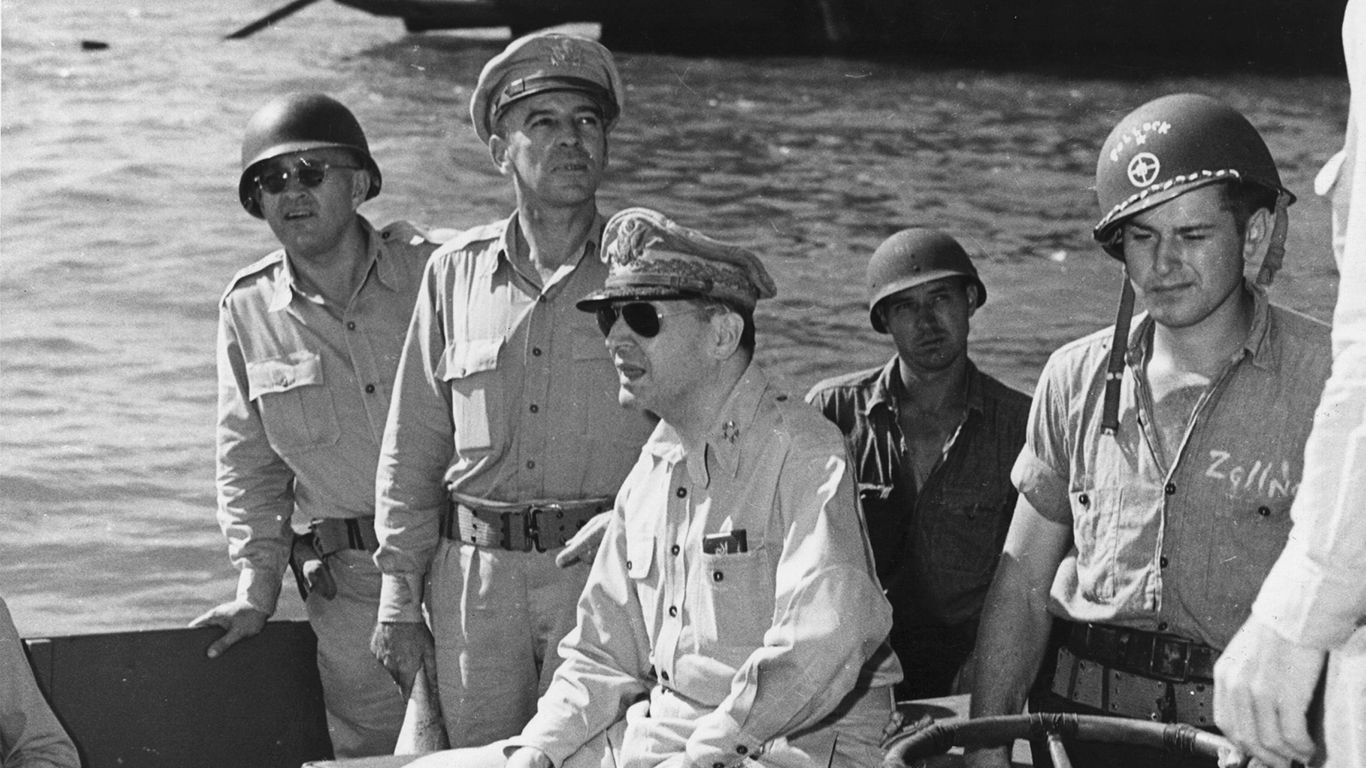 24/7 Wall St.
24/7 Wall St.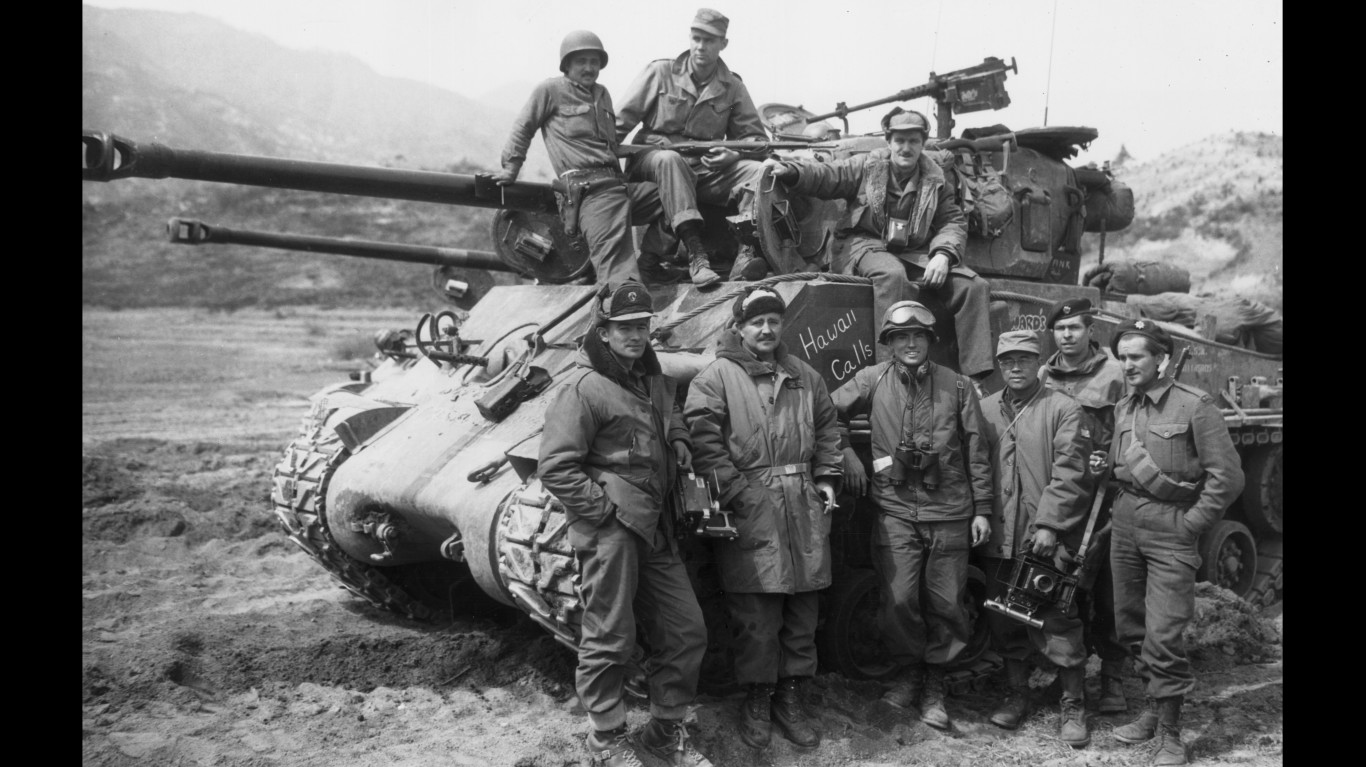 24/7 Wall St.
24/7 Wall St.